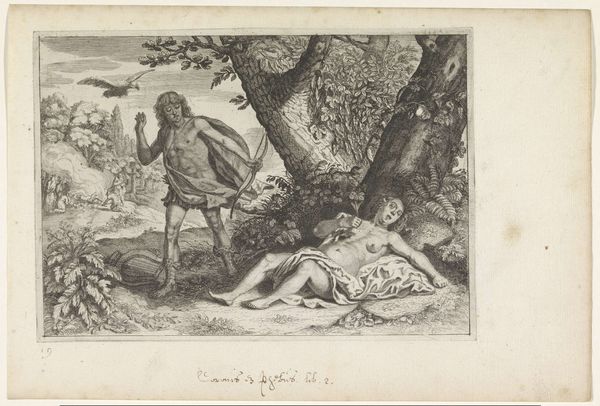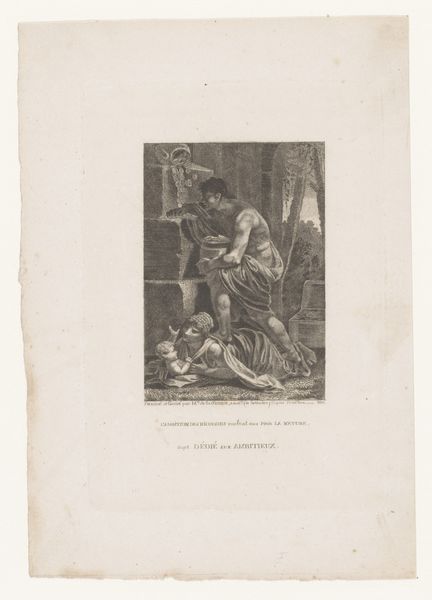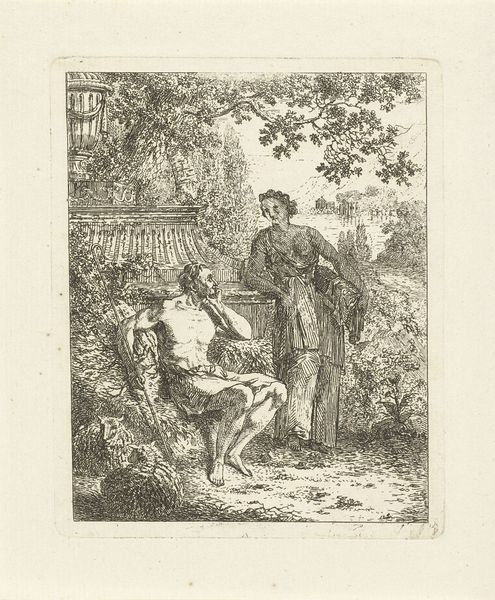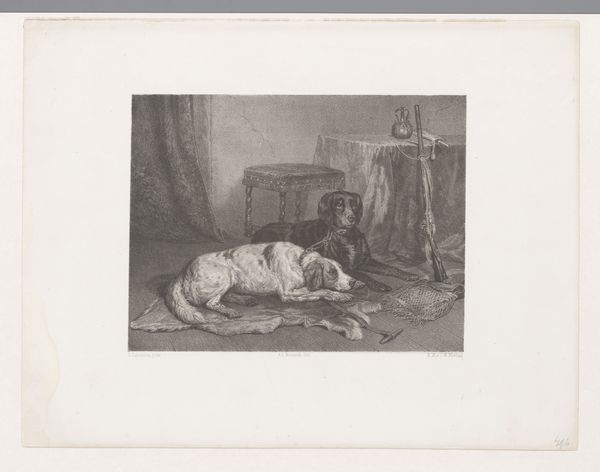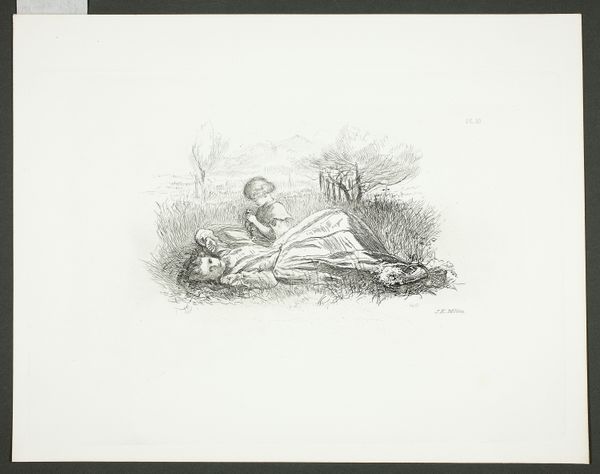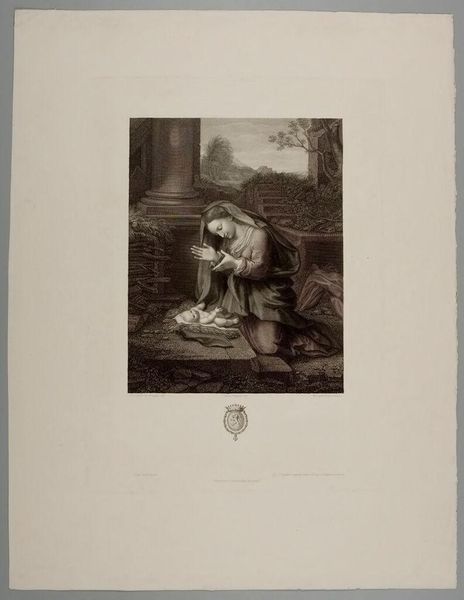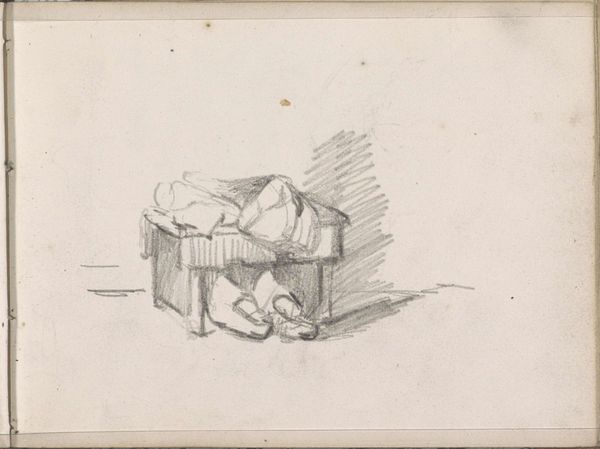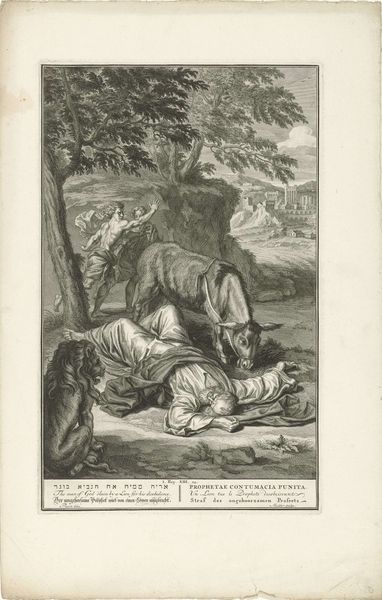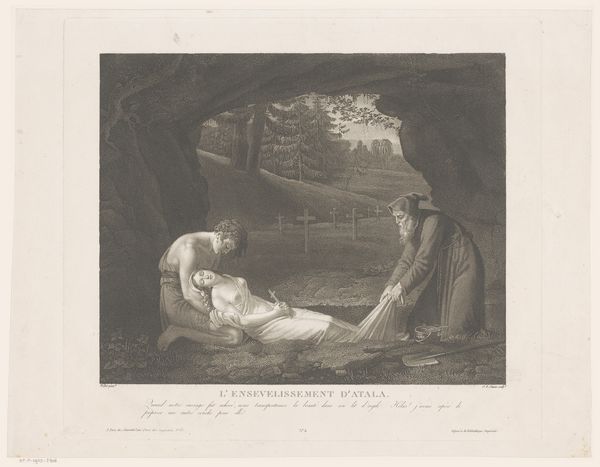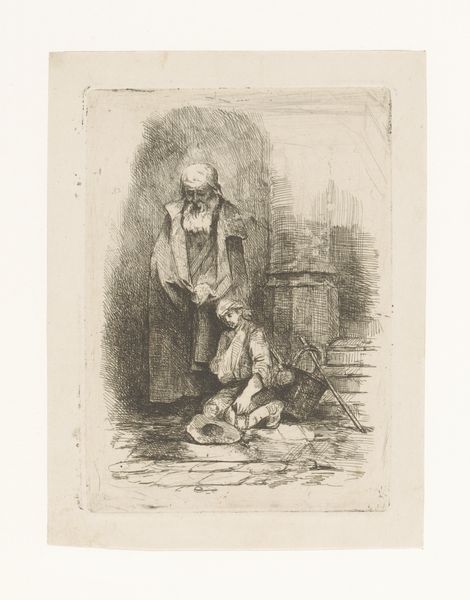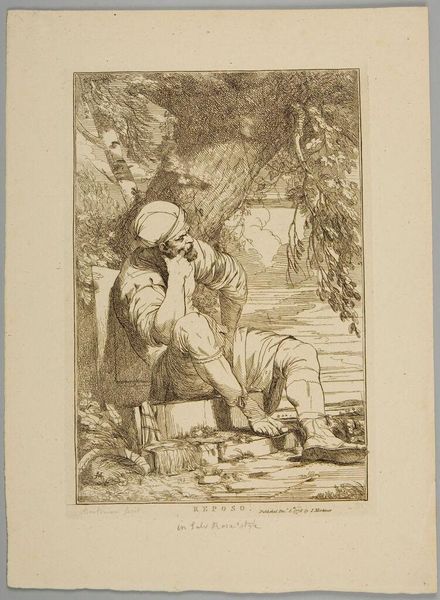
print, engraving
#
neoclacissism
#
narrative-art
# print
#
pen sketch
#
landscape
#
figuration
#
classicism
#
history-painting
#
engraving
Dimensions: height 315 mm, width 427 mm
Copyright: Rijks Museum: Open Domain
Curator: Bartolomeo Pinelli's engraving, "The Death of Gaius Gracchus," created in 1817, presents a stark image steeped in political consequence. The linear precision emphasizes the tragedy depicted. Editor: Gosh, it’s heavy, isn't it? All that fine detail kind of traps you in the scene. It feels desolate, like a last stand, almost. Curator: Indeed. Pinelli uses the classical language to tell a complex story about power and populism. Gaius Gracchus, a Roman politician, was murdered for his reformist ideas. We can consider this artwork a meditation on the violence that can result from radical politics, and we can also address that Gaius' political actions and reforms can now be re-evaluated through the lenses of class and wealth distribution. Editor: You see, what strikes me most is the exhaustion in the pose. The guy slumped against the structure...Is it a temple? A wall? The angle of the body, like he’s just given up the ghost after running from his opps. Talk about embodying defeat. Curator: That is an astute reading. The solid architectural form provides the backdrop and a sense of classical Rome but serves to reinforce the finality of the moment, highlighting the vulnerability of the body. The background reveals the pursuers, a mob bent on silencing dissent, who function as a constant threat of political instability and tyranny. Editor: Absolutely, and the mask carvings near the top…theatrical almost, adding another layer of drama. It is as if their screaming foreshadows an end to his radical ambition. I imagine this is the perfect case study of how art immortalizes those fleeting moments of raw humanity against the backdrop of history. Curator: And history painted by the winners. Pinelli here grants Gaius dignity in defeat and also presents an elegy to progressive disruption against the status quo. The engraving calls for us to continue to critique dominant powers through various critical lenses. Editor: True! Whoa, talk about art making you think. This scene leaves a lingering impact! Curator: This image will continue to prompt essential questions about societal power and sacrifice for years to come.
Comments
No comments
Be the first to comment and join the conversation on the ultimate creative platform.

